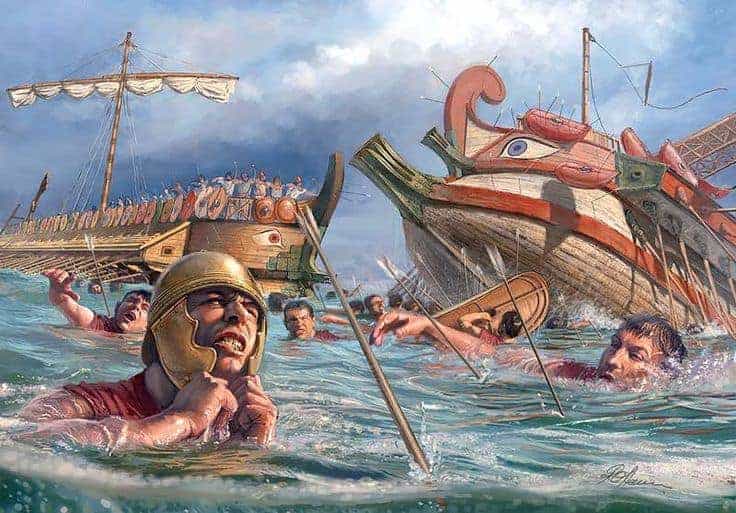The First Punic War (264 – 241 BC) was the first in a trilogy of wars between Rome and Carthage. At 23 years, it was the longest continuous war in history up to that point as the two nations ostensibly fought for control of Sicily. It was a brutal and bloody affair with both sides close to victory and defeat on several occasions before the Romans, with their seemingly limitless resources, ground their enemies down.
Rome and Carthage had co-existed peacefully since the formation of the Roman Republic with a total of four peace treaties signed from 509 BC to 279 BC. These agreements outlined each one’s territories but soon, Roman eyes greedily looked towards expansion in Magna Graecia. Rome had a special interest in Sicily, a prosperous island that was already the subject of disputes between Carthage and Greek city states. Things finally boiled over when Messana asked for help against the invading Syracusans.
Messana had been taken over by a group of mercenaries called the Mamertines in 288 BC. After losing a battle to Syracuse (ruled by King Hieron II, known as a tyrant), Messana appealed to Carthage for help in 265 BC. The Carthaginians stationed a garrison in the city but when Messana realized that Rome could help, they removed the Carthaginians and allowed two Roman legions into the city. The Carthaginians crucified the unfortunate garrison leader who had been kicked out and laid siege to Messana. The Roman consul at Messana asked for a peace deal but the Carthaginian commander, Hanno, rejected it. And so began a conflict involving over 1 million men. In this article, I will tell the story of the First Punic War featuring 6 of the most important battles.

1 – Battle of Agrigentum (262 BC)
The conflict started well for Rome as it defeated the Carthaginian and Syracusan forces at Messana. Under a new commander, Messalla, the Romans built on the initial success by attacking Syracuse and forcing Hieron to surrender. He agreed to become Rome’s ally in exchange for keeping his throne. However, Rome sent half of its forces back to Italy; an action that emboldened the Carthaginians who then sent another army to Sicily.
In 262 BC, the Romans sent the consul Megellus to Sicily along with another commander named Vitulus. They surrounded the Carthaginians, led by Hannibal Gisco, who were stationed in the city of Agrigentum on the island of Sicily. Although there were 50,000 people in the city, the Carthaginian garrison was much smaller, and they faced 40,000 Romans. As a result, Gisco refused to leave the city and engage with the enemy. The Romans thought it was a sign of weakness and decided to harvest the crops in the area for food. However, Gisco seized the chance and attacked the unarmed Romans. Further skirmishes resulted in the loss of many men, and Gisco knew he couldn’t afford further losses.
Meanwhile, the Romans knew they had underestimated the enemy and decided on a strategy to starve the inhabitants of the city. After five months, and with supplies running out, Gisco sent word to Carthage asking for help. Hanno, who was possibly Gisco’s son, arrived with between 30,000 and 50,000 men including thousands of cavalry and at least 30 war elephants. Hanno cut off Roman supplies and after a couple of months, the Romans offered battle, but this time, the Carthaginians refused. However, Gisco and the population of the city were starving by now, so the two armies finally engaged.
Hanno probably set up his infantry in two lines with the elephants in the back and cavalry on the wings. The Romans likely adopted their preferred triplex acies formation. After a lengthy battle, the Romans broke through enemy lines and routed the Carthaginians. Gisco and Hanno fled and, after initially pursuing them, the Romans turned back to take the city of Agrigentum. They plundered the city and sold approximately 25,000 people into slavery. Although this was common practice, it was a miscalculation as it angered nearby towns that would otherwise have been friendly to Rome. While the enemy commanders escaped which took the gloss off the victory, it was Rome’s first large-scale military success outside of Italy and gave it the confidence to expand.

